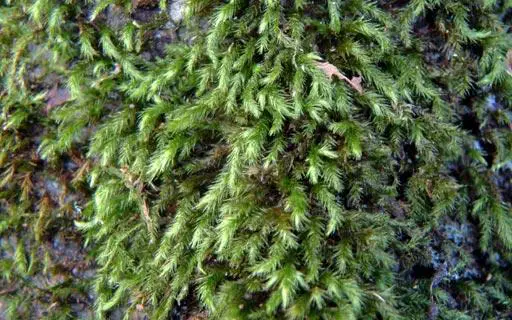
Palamoclad_leskeoides03l.jpg from: https://digital-museum.hiroshima-u.ac.jp/~museum/habit/moss_habit/Palamocladium leskeoides/Palamocladium_leskeoides.html
Introduction
Welcome to the fascinating world of Palamocladium Müll.Hal., a remarkable moss species belonging to the Brachytheciaceae family. This unassuming yet captivating plant has captured the hearts of bryologists and nature enthusiasts alike, offering a glimpse into the intricate beauty and resilience of the Bryophyta (mosses) kingdom.
Background
Before we delve into the specifics of Palamocladium, it’s essential to understand the broader context of mosses. These ancient plants have been around for over 400 million years, predating even the earliest vascular plants. Mosses are classified as Bryopsida, a division within the Bryophyta phylum, and play a crucial role in various ecosystems worldwide.
Main Content
Morphology and Identification
Palamocladium Müll.Hal. is a pleurocarpous moss, meaning its stems grow horizontally along the substrate. Its delicate, feathery appearance is a result of the densely arranged leaves that spiral around the stem. These leaves are typically lanceolate (lance-shaped) and possess a distinctive midrib running along their length.
One of the key identifying features of Palamocladium is its unique branching pattern. The stems exhibit irregular, pinnate branching, with smaller branches emerging from the main stem in a feather-like arrangement. This intricate structure adds to the moss’s overall beauty and aids in its identification.
Global Distribution and Habitat
Palamocladium is widely distributed across various regions of the world, thriving in temperate and tropical environments. It can be found growing on a variety of substrates, including tree bark, rotting logs, and moist soil in forests and woodlands.
This moss species is particularly well-adapted to humid and shaded environments, where it can take advantage of the moisture and protection provided by the canopy. However, it also exhibits remarkable resilience, capable of surviving in drier conditions by entering a dormant state until favorable conditions return.
Ecological Roles and Adaptations
Despite its diminutive size, Palamocladium plays a vital role in its ecosystem. It contributes to soil formation and moisture retention, creating a suitable environment for other plants and organisms to thrive. Additionally, this moss serves as a microhabitat for various invertebrates, providing shelter and food sources.
One of the remarkable adaptations of Palamocladium is its ability to reproduce both sexually and asexually. During favorable conditions, it produces spore capsules that facilitate sexual reproduction, while its fragile stems can easily break off and establish new colonies through vegetative propagation.
Case Studies/Examples
In a recent study conducted in a temperate forest, researchers discovered that Palamocladium played a crucial role in maintaining the delicate balance of the ecosystem. Its presence helped regulate soil moisture levels, preventing erosion and providing a suitable environment for seedling establishment.
Another fascinating example comes from a tropical rainforest, where Palamocladium was found growing on the bark of ancient trees. This moss species not only added to the overall biodiversity of the area but also served as a vital indicator of the forest’s health and age.
Technical Table
| Characteristic | Description |
|---|---|
| Phylum | Bryophyta |
| Division | Bryopsida |
| Family | Brachytheciaceae |
| Genus | Palamocladium |
| Species | Palamocladium Müll.Hal. |
| Growth Form | Pleurocarpous moss |
| Leaf Shape | Lanceolate |
| Branching | Irregular, pinnate |
| Habitat | Tree bark, rotting logs, moist soil |
| Distribution | Temperate and tropical regions |
| Reproduction | Sexual (spore capsules) and asexual (fragmentation) |
Conclusion
Palamocladium Müll.Hal. is a true marvel of nature, showcasing the incredible diversity and resilience of the moss kingdom. From its intricate morphology to its vital ecological roles, this unassuming plant has captured the imagination of enthusiasts worldwide. As we continue to explore and appreciate the wonders of the natural world, let us ponder: What other hidden gems await discovery, and how can we better protect and preserve these invaluable treasures?